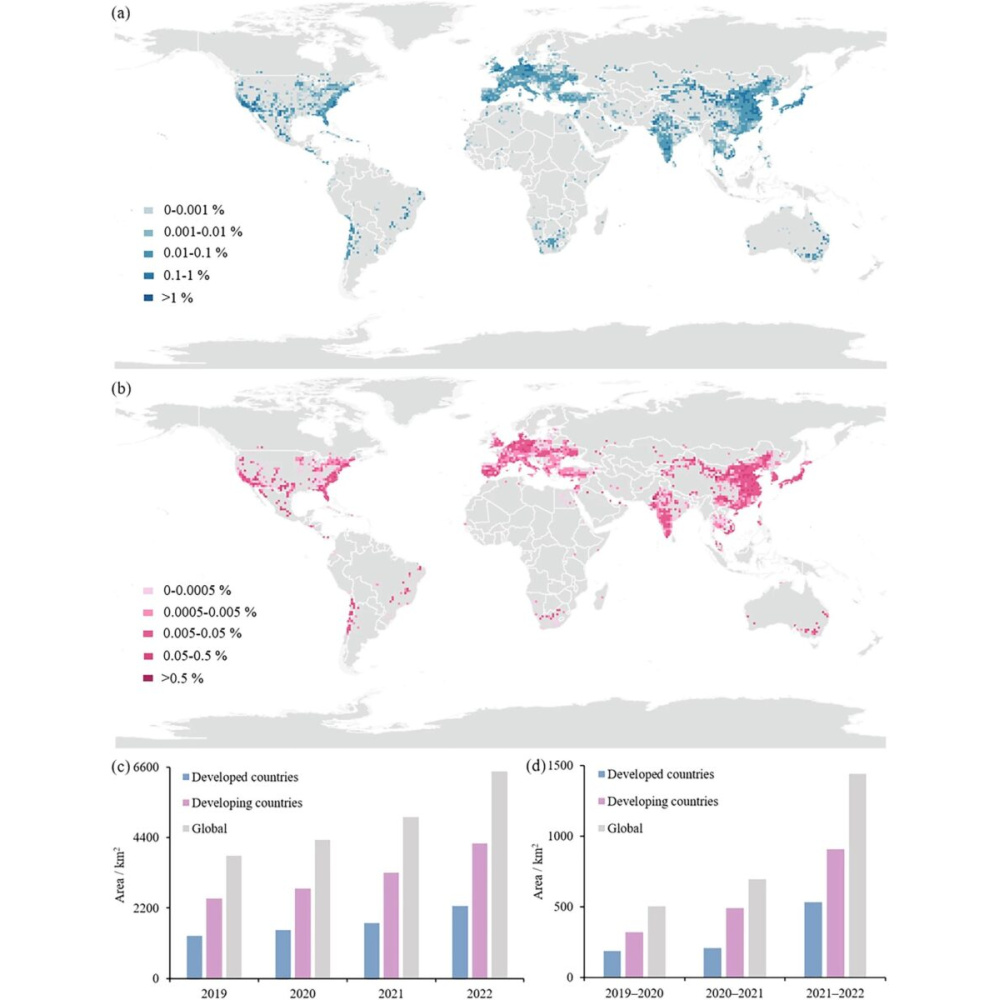Global PV dataset shows 2019-2022 data

A research team from China’s Beijing Normal University has developed a novel method for the identification of PV panels worldwide and has created a global database for the years 2019-2022.
Overall, in 2022, there were 6,469.8 km2 of solar panels worldwide, a growth of more than 60% compared to 2019’s 3,831.6 km2.
“This dataset offers unprecedented detail and accuracy for future research and policy-making,” said the academics. “Our approach is based on the concept of utilizing multi-source remote sensing data and multiple classifiers. It aims to overcome issues such as the difficulty of sample selection in PV extraction, the inefficiency of recognition methods, and the lack of timeliness in existing PV power station datasets.”
To create the dataset, the team has utilized both machine learning and deep learning. The first step in their approach included the deep learning model U-Net, for its ability to find shapes and details. They fed this model with 179 annotated high-resolution pictures from Google Earth (GE). With those, the model was trained to understand how PV sites look before an additional 1,326 images were fed into it. In those, the model had found PV panels.
The PV samples from the first step were then used as examples for the machine learning method, positive-unlabelled learning (PUL)-random forest (RA). The PUL part of this method trains the system on the basis of known positive examples only, while its RA group uses decision trees to vote whether a spot in an image has PV panels. The PUL-RA was then used on images from the Sentinel-2, covering the entire plant. Each place on earth is captured in the resolution of two months.
Comparing the accuracy of the new PV dataset from 2019 to 2022 with Kruitwagen’s dataset, the accuracy of the new dataset is over 90%, which is slightly higher than the dataset provided by Kruitwagen,” the team said. “The PV extraction method proposed in this study has high accuracy and stability on the validation set from 2019 to 2022, which implies that the two-stage classification framework can extract PV efficiently, and likewise indicates that the production of the new global PV dataset from 2019 to 2022 is reliable.”
Per their measurements, the global PV area in 2019 was 3,831.6 km2, while in 2020 it stood at 4,334.4 km2, in 2021 at 5,030.3 km2, and in 6,469.8 km2 in 2022. China is the country with the most significant amount of PV and the most considerable amount of PV growth, with a PV area of 2,542.5 km2 and a growth of 1,014.6 km2 by 2022. The US came second in the 2022 size list, with 1,051.4 km2, India came third with 673.9 km2, and Germany fourth with 248.1 km2.
“Statistics on the area and change of PV solar panels in developed and developing countries from 2019-2022 show that the PV area in developing countries is much larger than that in developed countries,” the academics added. “As of 2022, developing countries own 4,211.2 km2 of PV, which is about twice as much as developed countries, and the amount of new PV in developing countries is also higher than that in developed countries, with the new PV area in developing countries being 1,713.3 km2. From this observation, PV in developing countries is ahead of that in developed countries, and it is the mainstay of the world’s PV market.”
The annual global PV dataset is publicly hosted online. Details about it appeared in “Global photovoltaic solar panel dataset from 2019 to 2022,” published in Scientific Data. Scientists from China’s Beijing Normal University and the Moganshan Geospatial Information Laboratory have participated in the study.